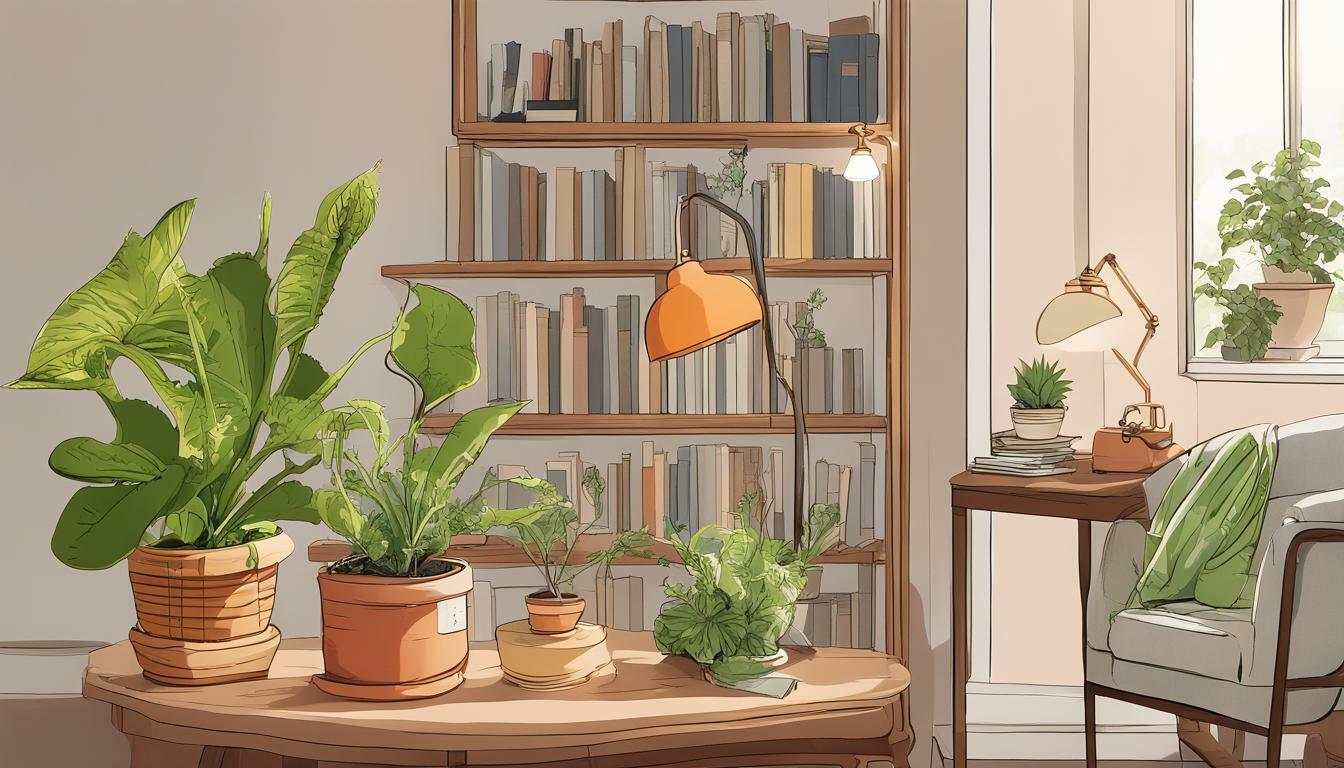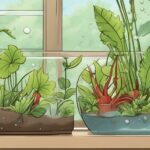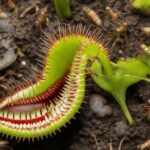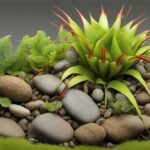If you’re a fan of carnivorous plants, you might be wondering if it’s possible to keep Venus Flytraps indoors all year round. The answer is yes, but it’s not as simple as just bringing them inside and forgetting about them. These unique plants have specific care requirements that must be met to thrive indoors.
In this article, we’ll explore the world of indoor care for Venus Flytraps. We’ll cover the necessary care tips and pros and cons of keeping them as houseplants. We’ll also discuss how to replicate their natural outdoor habitat indoors, so you can give your Venus Flytrap the best chance of survival.
Key Takeaways
- It is possible to keep Venus Flytraps indoors all year round with proper care.
- Indoor care for Venus Flytraps requires attention to specific needs and conditions.
- Replicating the natural outdoor habitat is crucial for the survival of Venus Flytraps indoors.
Indoor Care Tips for Venus Flytraps
If you have decided to grow Venus Flytraps indoors, here are some care tips to keep them healthy and thriving:
1. Location
Venus Flytraps require direct sunlight to thrive, so place them on a windowsill that receives at least 4-6 hours of sunlight daily. Avoid placing them near cold drafts or heating vents as this may cause damage to their foliage.
2. Soil
Use a well-draining soil mix that consists of 1:1 peat moss and perlite or sand. This helps retain moisture while also allowing for proper drainage.
3. Watering
Water your Venus Flytraps with distilled water or rainwater as they are sensitive to the chemicals found in tap water. Keep the soil moist but not waterlogged. Ensure that the pot has drainage holes to prevent water from accumulating.
4. Feeding
Venus Flytraps are carnivorous plants and obtain nutrients by trapping insects. While they can catch their own food, you can also feed them small insects like fruit flies or mealworms. Avoid feeding them meat or human food as this can harm them.
5. Humidity
Venus Flytraps require a humid environment to thrive. You can increase humidity by placing a tray of water near the plant or by using a humidifier.
By following these care tips, you can successfully grow Venus Flytraps indoors and enjoy their unique and fascinating behavior.
Venus Flytraps as Houseplants: Pros and Cons
If you’re considering keeping Venus flytraps as houseplants, there are both pros and cons to keep in mind.
Pros:
- Venus flytraps make unique and interesting indoor plants thanks to their carnivorous nature and unique appearance.
- They are relatively low-maintenance and can thrive indoors with proper care.
- Having a Venus flytrap as a houseplant can be a great conversation starter and a unique addition to your home décor.
Cons:
- Venus flytraps require specific growing conditions, including bright but indirect sunlight, high humidity, and soil that is low in nutrients.
- They can be difficult to keep alive and healthy if you don’t provide the right care.
- Some people may find the idea of keeping a carnivorous plant indoors unsettling.
Overall, while Venus flytraps can make fascinating and rewarding houseplants for those willing to put in the effort, they may not be the best choice for everyone.
Replicating the Natural Habitat for Venus Flytraps Indoors
Venus flytraps are native to the Southeastern United States, where they grow in nutrient-poor soils with high levels of sunlight and humidity. Replicating these conditions indoors can be challenging but is crucial for the health and growth of your Venus flytrap.
| Element | Ideal range for Venus flytraps |
|---|---|
| Soil | Soil that is acidic, well-draining, and nutrient-poor, such as sphagnum peat moss |
| Sunlight | At least 4-6 hours of direct sunlight per day |
| Humidity | Around 50-60% humidity levels |
| Water | Water with distilled or rainwater, and keep the soil consistently moist but not waterlogged |
When it comes to soil, Venus flytraps require soil that is acidic, well-draining, and nutrient-poor. Sphagnum peat moss mixed with perlite or sand can be an ideal choice.
Lighting requirements are also crucial for your Venus flytrap’s growth. They require at least 4-6 hours of direct sunlight per day, so placing them near a south-facing window or providing them with artificial grow lights can be helpful.
The natural habitat of Venus flytraps is quite humid, and replicating this indoor is necessary for their survival. Misting your plant frequently or placing it on a tray with pebbles and water can help maintain the required humidity levels.
Finally, watering your Venus flytrap with distilled or rainwater and keeping the soil moist but not waterlogged is necessary. Water the plant when the top inch of the soil feels dry to the touch.
By replicating the natural habitat of Venus flytraps indoors, you can ensure that your plant stays healthy and thriving.
Conclusion
In conclusion, Venus Flytraps can be kept indoors all year round as long as you replicate their natural habitat as closely as possible. These fascinating plants require specific care and conditions to thrive indoors, but with proper care, they can be a beautiful and unique addition to your indoor garden. Remember to provide them with the right soil mix, sufficient sunlight, and regular watering. It’s important to note that keeping Venus Flytraps as houseplants comes with both pros and cons. On the one hand, they can serve as natural pest control and be an interesting conversation starter. On the other hand, they require a bit more attention than some other houseplants and may not be suitable for those who lack the time or patience necessary for their care. Overall, if you’re up for the challenge and willing to put in the effort, Venus Flytraps can be a rewarding indoor gardening experience. Just be sure to do your research and follow the tips and advice provided to ensure their success in your home.Can Venus Flytraps Survive Indoors without Difficulty?
Can Venus Flytraps survive indoors without difficulty? Keeping a venus flytrap alive indoors can pose challenges. These carnivorous plants require specific conditions to thrive, including high humidity, sufficient sunlight, and nutrient-rich soil. Without proper care and attention, Venus Flytraps may struggle to survive indoors. It is crucial to mimic their natural habitat as closely as possible to ensure their well-being.
FAQ
Q: Can Venus Flytraps be kept indoors all year round?
A: Yes, Venus Flytraps can be kept indoors all year round, as long as they receive the proper care and conditions.
Q: What are some indoor care tips for Venus Flytraps?
A: Here are some indoor care tips for Venus Flytraps: – Place them in a bright location with indirect sunlight. – Keep the soil moist, but avoid overwatering. – Use a well-draining soil mix, such as a mixture of peat moss and perlite. – Avoid fertilizing Venus Flytraps, as they obtain nutrients from capturing insects.
Q: What are the pros and cons of keeping Venus Flytraps as houseplants?
A: Some pros of keeping Venus Flytraps as houseplants include their unique appearance, the satisfaction of watching them catch insects, and their low maintenance nature. However, some cons include their need for specific care requirements, the potential for pests, and their limited lifespan compared to traditional houseplants.
Q: How can I replicate the natural habitat for Venus Flytraps indoors?
A: To replicate the natural habitat for Venus Flytraps indoors, you can: – Provide them with bright, indirect sunlight or use artificial grow lights. – Mimic humidity levels by placing the pot on a tray filled with water and pebbles. – Maintain a temperature range of 70-85°F (21-29°C). – Avoid using tap water, as they prefer distilled or rainwater.











